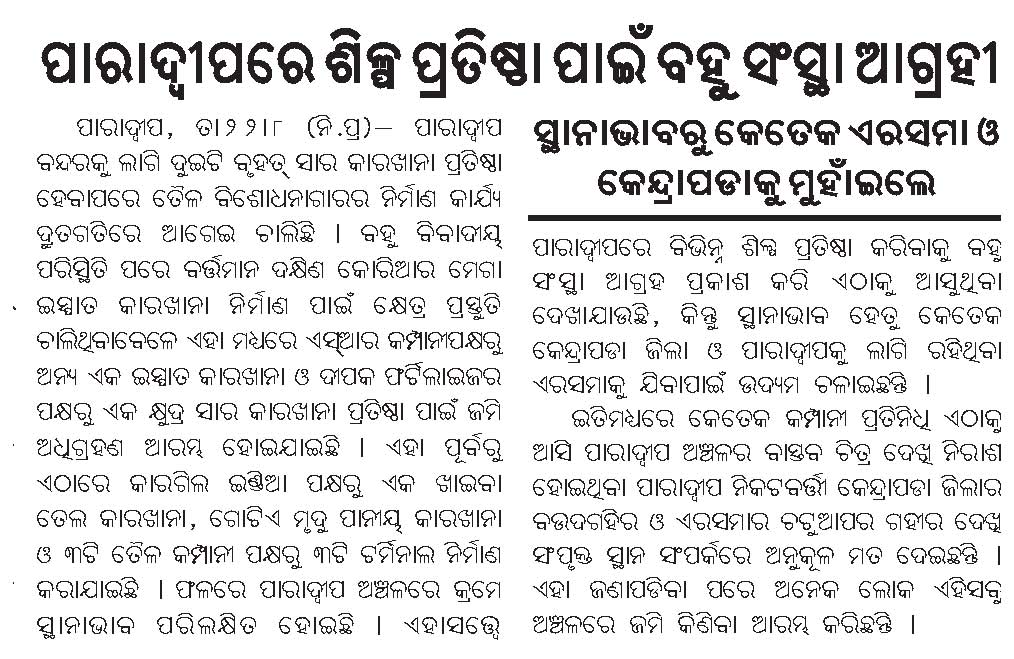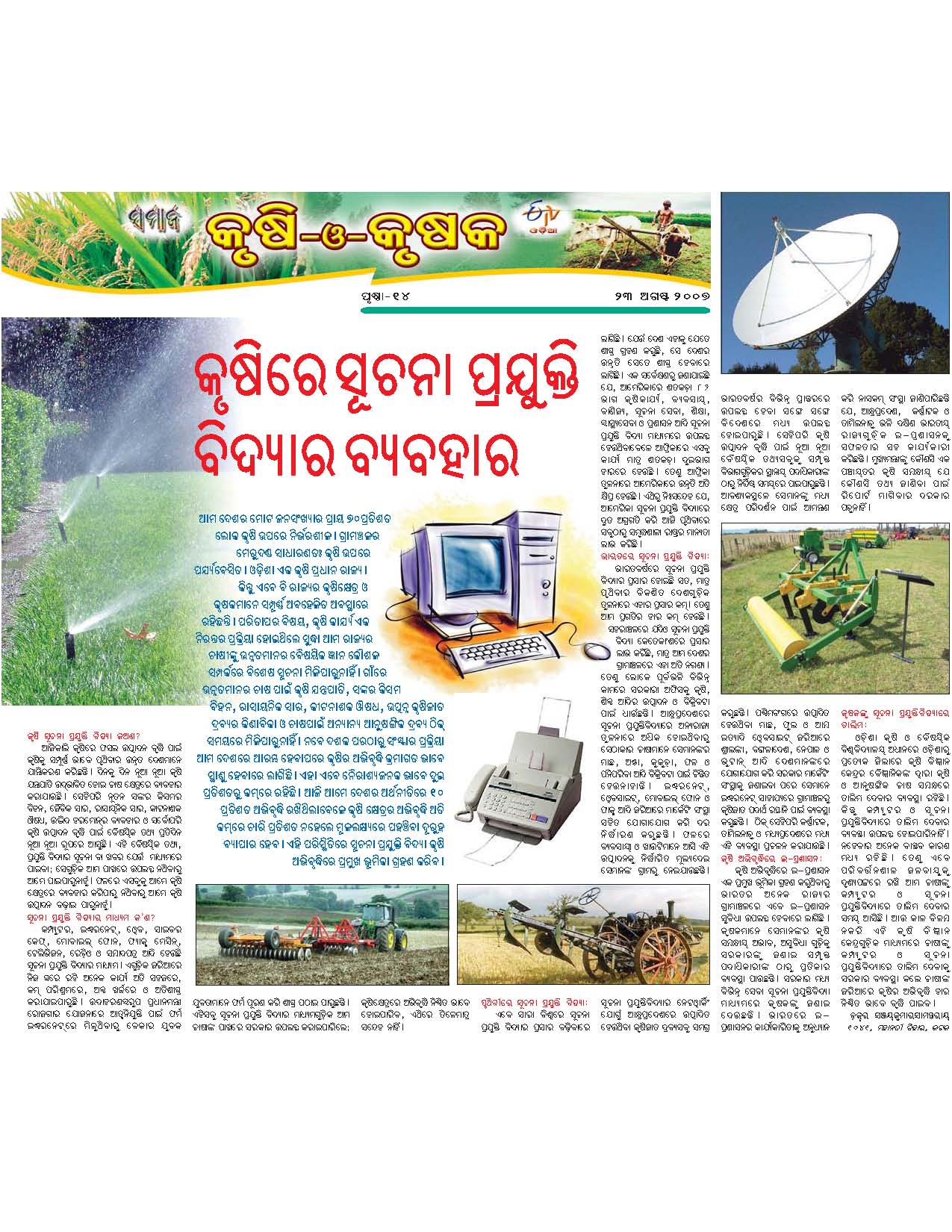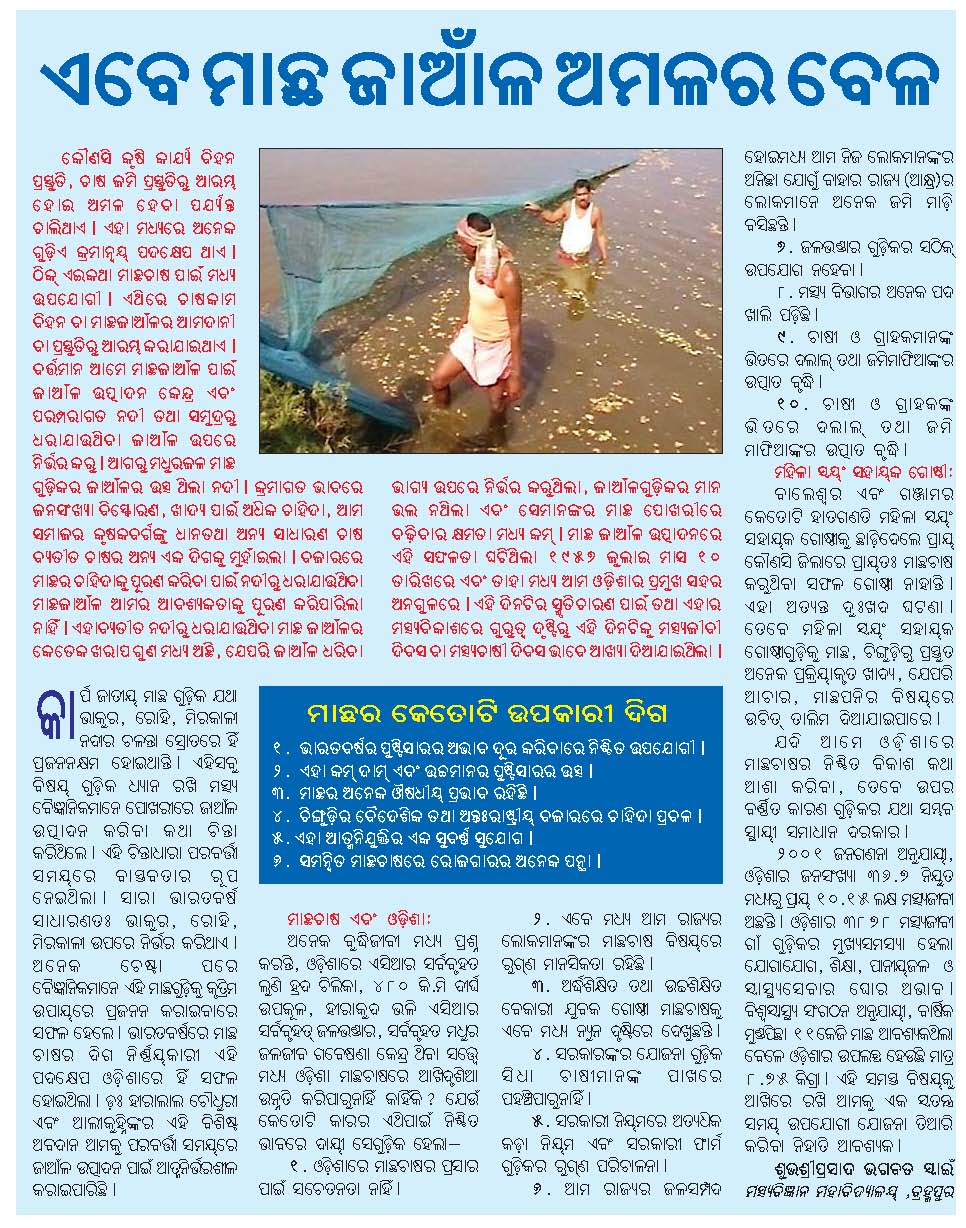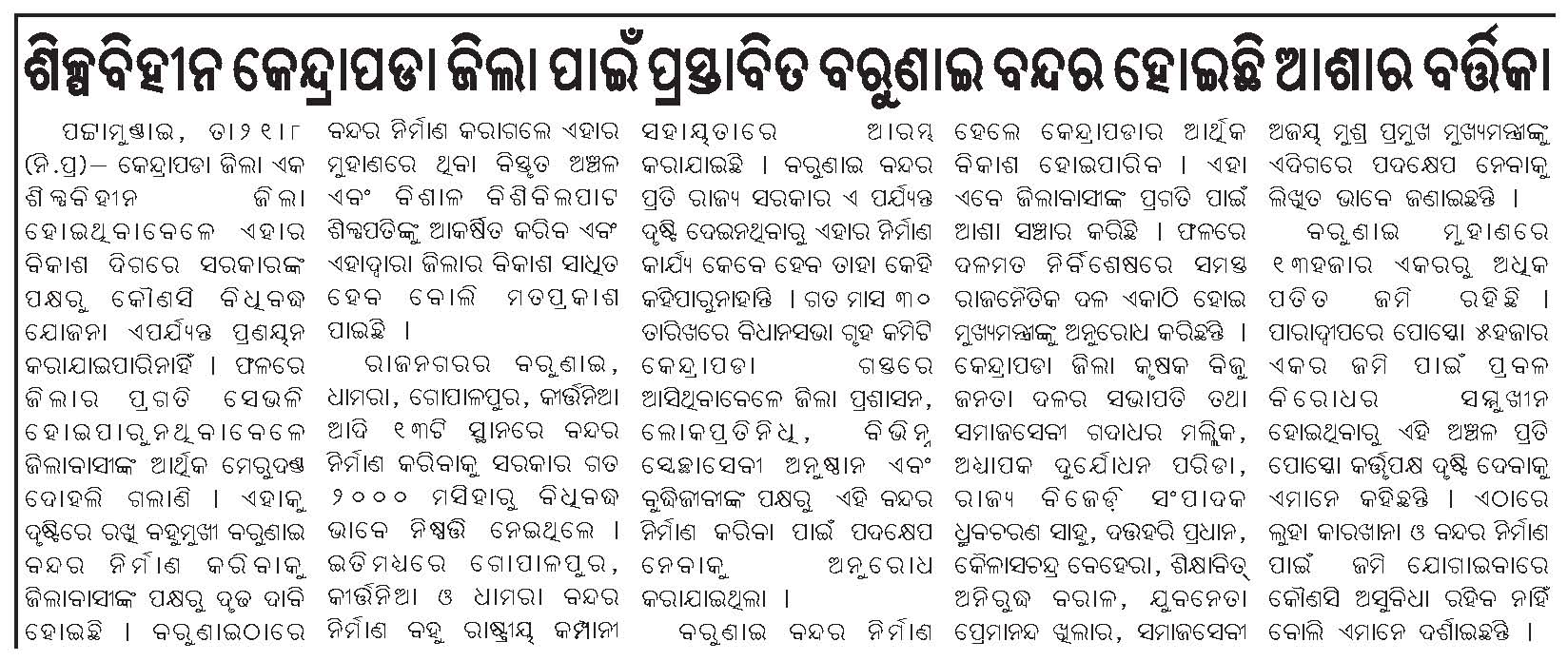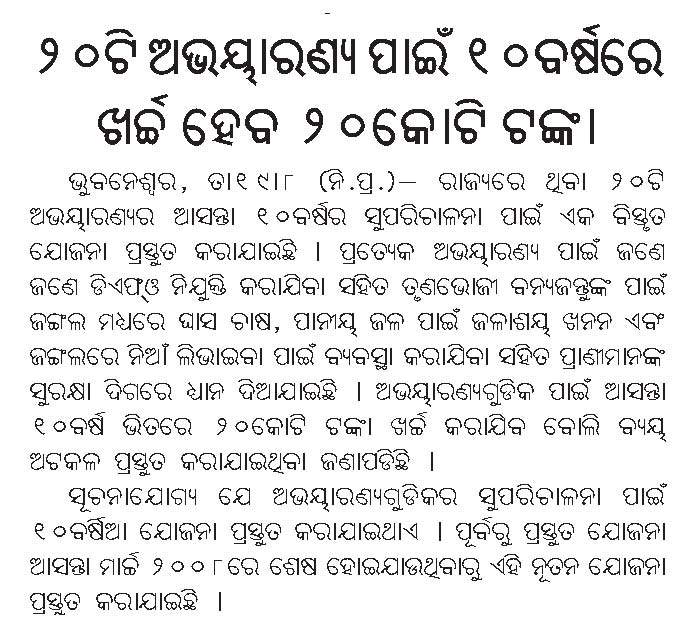… I had shifted the naval training centre from Visakhapatnam to Chilika. And the Army Air Defence College was shifted from Deorali in Maharashtra to Gopalpur where a cantonment was established in fulfillment of a long-standing demand over several years. An ordnance factory was set up in Titilagarh in Balangir district. An arms factory was set up in Koraput. …
There were no direct train services from Bhubaneswar to New Delhi . There was also no direct air connectivity as well. In 1980, Nilachal Express was stared between Delhi and Bhubaneswar . Direct flights were also introduced. A long railway track initiated to connect Jakhapura-Bansapani and bring benefits for vast tracts of Keonjhar district has been completed this year. To link western Orissa with coastal Orissa, Talcher-Sambalpur railway track was undertaken. Rayagada-Koraput railway line was built to connect Rayagada–Koraput with Visakhapatnam . A new railway division was established at Sambalpur and a new zone (East Coast) was created.
…When I was Union Minister, I had demanded that tourism be declared an industry. When it was not granted, as Chief Minister of Orissa I declared the hotel business as an industry. Later the Central government accepted my decision. As a result, many quality hotels were built in the state. Hoteliers like the Oberois came to Bhubaneswar …
Adjacent to Bhubaneswar city, the Chandaka Elephant Sanctuary was established. For the protection of wildlife, Bhitarkanika wildlife sanctuary was established along with many other sanctuaries in the state. Puri-Bhubaneswar and Konark were declared a Golden triangle for tourism and Konark-Puri Marine Drive ‘s construction also made this entire area very attractive for the tourism sector. Many such programmes were undertaken to boost tourism in the state.
The state capital of Bhubaneswar was a small city of government employees and its population was one lakh only. The area and nature of the city was transformed. Bhubaneswar became a hub of industrial development and a prominent business and trade centre. Chandaka, Mancheswar, Rasulgarh industrial estates and the newly developed Nayapalli-Chandrasekharpur areas were in for rapid expansion. Parks such as Indira Gandhi Park , Mahatma Gandhi Park and Forest Park were developed in the capital city. Kalinga stadium, construction of a deep lake for water sports in it, the expansion of roads, the beautification of the city with electric lamps, Samanta Chandrasekhar Planetarium, Nabakrushna Choudhury Centre for Development Studies, Harekrushna Mahatab State Library, Kalinga Studio, Odissi Research Centre for development of Odissi song and dance, Xavier Institute of Management for high quality management education, National Institute of Physics, massive plantation programmes to make a green Bhubaneswar, a plant resource centre park for cultivation and propagation of rare cacti were the efforts taken to turn Bhubaneswar into a modern and attractive city. Earlier it was like a small village and without proper attire, it would not attract attention. The state capital should be wholesomely beautiful.
… In 1980, Orissa was the most backward state in the field of agriculture. It is the same way even now. In 1980, a massive effort was undertaken. For a long time, per hectare yield of paddy in Orissa was a mere one tonne, in 1980 it rose by 40 per cent and the yield became 1.4 tonne. The groundnut yield per hectare was two tonnes and from the productivity point of view, it was the highest in the country. The fertilizer yield was improved from only 6 kg per hectare to 22 kg in the year. Of the agricultural land, only 19 percent could benefit from the irrigation system and it rose to 28 percent and by 2000, it grew up to 33 percent. Canal irrigation, tube wells, lift irrigation facilities were increased and creek irrigation facilities were introduced for the first time. Like this, 15 percent additional land could be irrigated and Orissa could be brought into a state of self-reliance.
For the first time, agriculture was accorded the status of an industry in the state and revolutionary agriculture policies were adopted. This enables aid and cooperation to flow in for the farmers just like the industrialists could avail various kinds of benefits and cooperation. Like IPICOL for the industrial sector, APICOL was formed for the agricultural sector. A sum of Rs 20 lakh was allotted for cold storage facilities by the state government.
… In 1980 when the Congress party came to power, the electricity yield capacity in Orissa was very low; it was only 373 megawatts. To improve the scenario, many hydro electricity projects and thermal power plants were constructed. The Orissa Power Generation Corporation and Ib thermal power unit were formed to produce 820 MW in the state. And the Union government also established a 3,000 MW Super Thermal Power Plant. In the later years, India’s the first ever power sector reforms were undertaken in the State. This resulted in putting Orissa’s name as a ‘surplus electricity generating’ state and within 20 years the rate of electricity production became more than six percent higher than in 1980.
There was no environment for industrial development in Orissa then. Except a handful of industries, no one came forward to become an industrialist. That is why attractive industrial plans were formulated to bring about a revolution change in the field. “Rs 1000 crore in 1000 days and 1000 industries.” Whatever was promised came true. Big industries like NALCO in Damanjodi and Angul, Paradeep Phosphates in Paradip, Birla Tyres in Balasore, and FACOR in Bhadrak are some of the big industrial houses apart from numerous small and medium sized industrial units. Chandaka and Rasulgarh in Bhubaneswar , Jagatpur in Cuttack , Balasore, and Kolunga in Rourkela , Jharsuguda, and industrial estate in Balangir were the new industrial units set up. Nine spinning mills, five sugar mills, two oil mills, and many agricultural product mills were prominent among them. Sewa Paper Mills in Koraput, Mangalam Timbers in Nawarangpur, Nicco Cables in Baripada, Powmax Steel in Titilagarh, Orissa Sponge in Keonjhar, Ipitata, Utkal Asbestos in Dhenkanal, Nilachal Ispat Nigam in Jajpur, Oswal fertilizers, Paradip Oil Refinery in Paradip and Software Technology Park in Bhubaneswar, Fortune Towers were also established.
Most of the industrialists who have established themselves in the small and medium industries are Oriya. The creation of a favourable environment for industrialisation in the state has made this happen and a strong team of Oriya industrialists have created a suitable environment for rapid industrialisation in the state. The reports prepared by the Nabakrushna Choudhury Institute and the Planning Commission of the Union Government indicate that during that time Orissa made spectacular advancement in the industrial sector and by 2000 Orissa had became an important destination for capital investment.
For the development of sports, many sports schools were also established in the state from football to hockey. Those sports personnel who earned laurels for themselves and international fame for their state have emerged from the sports institutes.
My Comments: Mr. JB Patnaik definitely has made some good contributions to Orissa. But I wonder if he is being clever in the above piece and indirectly claiming a lot more to be his contributions. Earlier we had listed some of Biju Patnaik’s contribution to Orissa during 1961-67.

